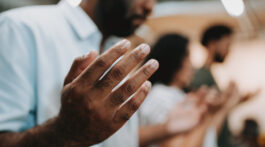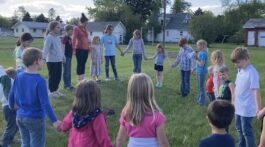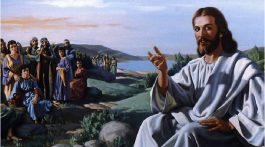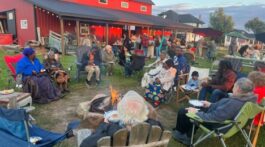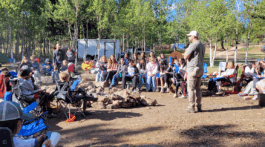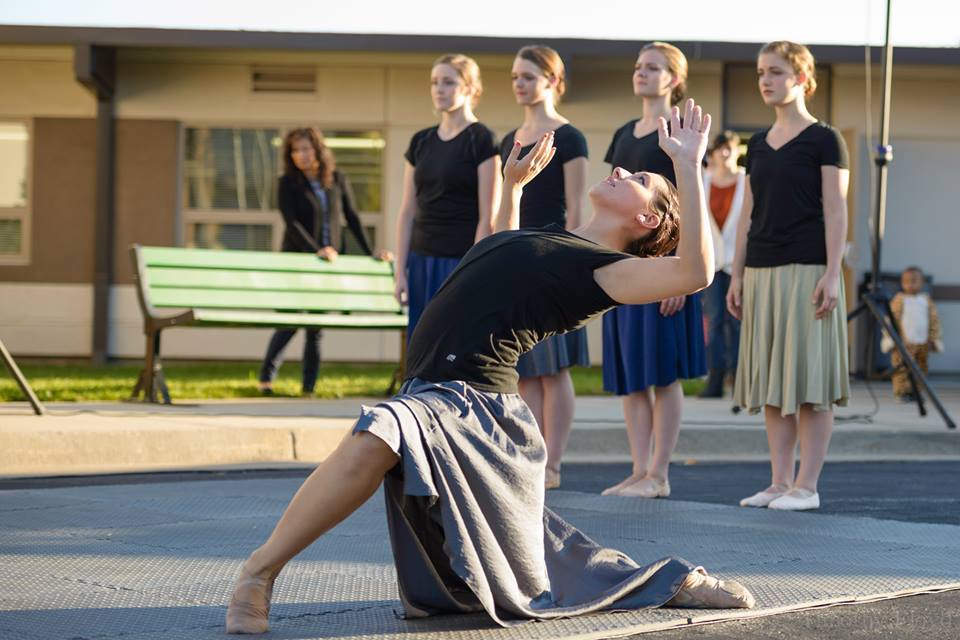Worship is all about finding your connection with God. My greatest connection is through dance. Controversial? Maybe so; but hear me out while I tell you my story.
I started dancing when I was nine. At the time, it wasn’t a spiritual connection for me, but I had been dancing around the house, and thus wreaking havoc, for so long that my mother eventually decided to just enroll me in ballet. I was so excited and couldn’t wait to start. I still remember how nervous I was for my first lesson and how in love with ballet I felt afterward. As fast as that, dancing had become my “thing.”
I stayed at that studio until I was 14, but then felt that I had reached the peak of my abilities there and switched to Dramatic Truth Ballet Theatre. It was a Christian studio, which was honestly very foreign to me. I loved ballet, but I didn’t see how it could be a worshipful experience with all the focus on technical perfection.
Boy, was I wrong. I had no idea how important dance would become. My troupe had “worship week” once a month, where we would warm up briefly and then spend the rest of the classes listening to Hillsong, Bethel, or some other Christian worship music. Some students sang, some quietly read their Bibles, some were, of course, dancing. Though I was initially cautious to participate—always worried about my next step or who was watching—I eventually warmed up to dancing freely for the Lord and even looked forward to worship classes as the highlight of the month.
Impact of the arts
Before long, I was dancing with the junior company at churches, charity events, and other Christ-centered organizations. After the first half of the season had ended, we were looking for new places to share the gospel through dance. We’d been to the churches of most of the group members by now, but we hadn’t been to mine. When it was suggested, I felt hesitant. I didn’t want to say no, but I knew dance was something of a sensitive topic in the Adventist church.
My teacher prodded me enough that I told her I’d go ask my pastors about it. So the next Sabbath I went and talked to my youth pastor. He was all for it, and immediately went to work trying to get the board to approve my project. I wasn’t overly involved in the whole process, but I know there was a bit of controversy over allowing a dance concert in our church. Finally, the church ruled that we should be allowed to perform, and I am still so grateful for their open hearts in allowing us to share our worship.
We held the concert, “One Thirst,” on a Saturday night in the church gym. All the songs were Christian—some of them hymns, some of them more modern. There was one piece, “Lord Have Mercy,” that none of us dancers were too fond of. It required us to wear long, hot, black dresses and carry candles, and the song felt a little overdramatic. Looking into the crowd, however, I saw a captivated audience. Several people were crying, and I had some come up to me afterward and tell me how much that piece moved them.
Though some of the church members weren’t initially thrilled about this concert, they attended it regardless and received a blessing. Their openness to the arts as a form of worshipful expression had a powerful impact, and they even invited us back to perform outside for our church’s alternative Halloween program, Safe Haven.
Worshiping in truth
Dancing is such a precious form of praise for me and many others. The idea that I am giving back to God entirely what He gave to me (my body and the ability to dance) makes the whole experience feel so special. Through dance, I can communicate joy, praise, sorrow, or pain in a way that cannot be expressed in words. Having the opportunity to share this gift with others was such an exciting thing.
However, we’re all different, and my experience may not be the same as yours. Dance was where I found my connection with God, but there are many different worship styles. I am still so grateful for my church’s support, and I would call all Christians to treat alternative worship styles in the same way. Even if it’s not how you connect, tolerance of how others communicate with the Lord is so important in keeping the church unified and passionate. Above all, our relationships with God are key—so let’s all worship in a way that is true!
—Olivia McAuliffe is a sophomore psychology major at Union College.
[Sidebar]
Dancing in the Bible
Dancing for God isn’t a modern concept! Check out some of these biblical references to dancing as a form of worship.
- “Let them praise His name with dancing; let them sing praises to Him with timbrel and lyre.” (Psalms 149:3)
- “David and all Israel were celebrating with all their might before the Lord, with castanets, harps, lyres, timbrels, sistrums and cymbals…. David was dancing before the Lord with all his might.” (2 Sam. 6:5, 14)
- “You have turned my mourning into dancing; you have loosed my sackcloth and clothed me with gladness.” (Psalm 30:11)
- “Then Miriam the prophetess, the sister of Aaron, took a tambourine in her hand, and all the women went out after her with tambourines and dancing.” (Ex. 15:20)
- “Praise Him with tambourine and dance; praise Him with strings and pipe!” (Psalm 150:4)
- “Is not this David, of whom they sing to one another in dances, ‘Saul has struck down his thousands, and David his ten thousands?’” (1 Sam. 21:11)
- “Then shall the young women rejoice in the dance, and the young men and the old shall be merry. I will turn their mourning into joy; I will comfort them, and give them gladness for sorrow.” (Jer. 31:13)
All Bible texts are from the English Standard Version



